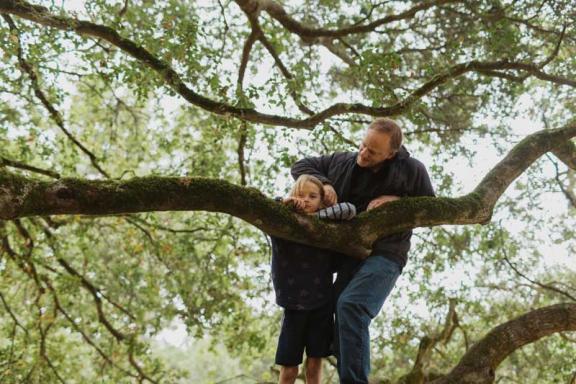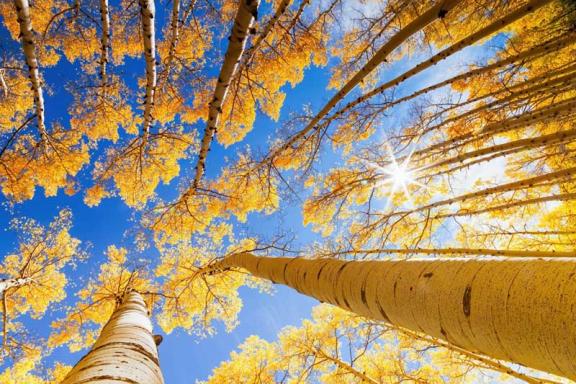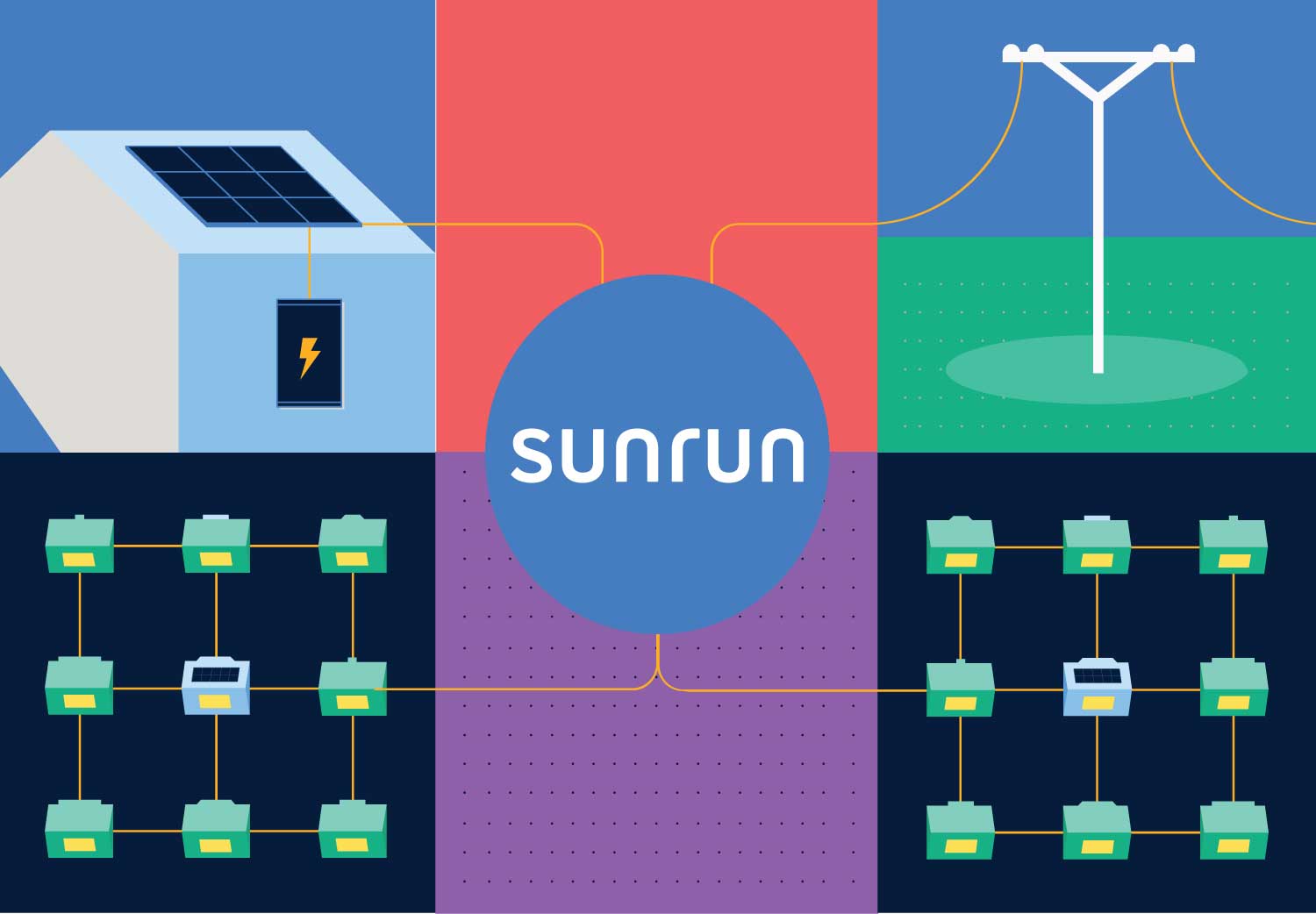Money doesn’t grow on trees. Energy does.
At least, in a manner of speaking. We’ve been taught it since elementary school:
The sun is at the beginning of the food chain. Seeds sprout with water and grow towards the sunlight. Their little green leaves absorb sun rays and the plant converts that light energy into chemical energy. Herbivores eat those plants to get the energy they need. Carnivores eat those animals to get the energy they need.
As omnivores, humans tend to do as we please. But the most fundamental reason we eat is for energy and, as my short explanation above was meant to convey, plants are a big part of it—whether we’re eating them directly or not.

Early on (and to this day) we burn wood for thermal energy.
We use the remains of dead plants for fuel. Our power plants burn those same remains (or the remains of animals) to generate electricity. The funny thing is we often look towards agriculture to solve our hunger problems, but maybe it's better suited to solve our energy issues. Not by burning plants, but by learning from them.
Growing Power
Imagine you could plant a tree on your roof that uses its leaves to gather sunlight and then pump electricity into your house. You don’t have to cut it down to get energy out of it. It just sits up there and does its job. The roots tangle around the corners of your building, and weave themselves into the electrical system.
Now imagine your whole neighborhood planted these trees. From above, neighborhoods might look densely forested and you’d probably enjoy the shade in the summer. The whole experience would be strange, but beautiful. And clean. The energy would literally be growing from those trees. Now imagine that your tree’s roots also connected to the roots of other trees in the neighborhood to form a huge network that allows the trees to strengthen each other.
It's a nice fantasy. Except for the last part. That isn’t part of the fantasy. Trees already do this.
I moved a lot as a kid. My dad was in the military when I was born. That is, until he came home from deployment one day and I didn’t recognize who he was. That was enough to set him on the path to retiring from the service.
He soon took a position at a company where he started at the bottom rung but quickly began climbing his way to the top—prone to skipping a rung or two when he could. He worked hard and set records and gave it everything he had. But when you’re climbing the chain that quickly, you’re not likely to stay in one place. So we still moved a lot.
A lot of parents worry about the effect moving so often can have on their kids. For me though, I loved the adventure. We always got a new home to explore and new people to meet. I was excited by the variety of people in the world and learned that the places I lived, even just across the United States, could be vastly different—the way they looked, the way it felt to go outside, your mood swimming in a chlorinated pool under the blazing hot sun or in the algae-filled depths of a lake beneath constantly overcast skies. Even the air had different textures as it filled your lungs. The look and feel of seasons offered completely different expectations.
Then, of course, there were the trees who stood like pleasant sentries along the highways, welcoming you to each new landscape. The tall pines of the Northwest laid plenty of shade for the less resilient vegetation to grow while still offering them what radiation they needed from the sun. That jurassic-like plant life gave way to the dry humid climate when we lived in the desert. But there were always trees—pine, palm, and everything in between.
Pando The Trembling Giant
Despite all the moving we did, we always found our way back to Utah. I had plenty of family on both sides that lived there, so no matter the season, we’d come up with an excuse to see aunts, uncles, and cousins in the Beehive State.
Utah is widely known for its diverse and beautiful landscapes, perhaps the most famous being the snow-covered Wasatch mountains or collection of breathtaking red rock arches in southern Utah. What’s less widely known is that Utah is also home to what was once considered1 the largest living organism on the planet: Pando, the Trembling Giant. It’s a forest right about in the middle of the state.2
Why does this forest have a name and why is it singular? Because it is one big organism. This “forest” is made up of approximately 47,000 genetically identical trees that are literally just mature branches of one single, ancient tree. It isn’t only one of the world’s most massive organisms, it’s also one of it’s oldest. Like over a million years old.

Until fairly recently, we were largely unaware of the underground workings of trees.
But scientists are now finding that many trees across the world are linked in interconnected networks. And this discovery has revealed that, among other things, what’s going on down there facilitates “tree communication, memory, and learning.”3 Wow.
They’re still unraveling all the implications but already scientists have found that resiliency is one big reason trees appear to do this. Trees connected to these networks tend to live longer than those in isolation.4 And not just when conditions are nice. In fact, especially when they aren’t. Many have started to refer to them as “wood wide webs” and they’re a striking parallel to one of the biggest recent innovations in our energy infrastructure.
The Problems of An Aging Grid
You would be hard-pressed to imagine a world that is willing to give up all the convenience of energy to better the planet itself. Only the most zealous are willing to transition to a life completely off the grid. And even if everyone wanted to, it’s not feasible. We didn’t grow up understanding how to forage for food and stay warm without a central heating system. We need electricity, and we kind of have to deal with the devil to get it. The way we’ve handled this for over a century is proving increasingly problematic in our modern world.
Electricity is one of those things you don’t really notice (or appreciate) until it’s gone. It’s become such a fundamental part of our lives that we hardly know how to function without it. Earlier this year, Texas was hit with an unprecedented winter storm that knocked out the power and destroyed homes.5 Literally. The pipes froze, then burst, then destroyed. People lost everything to a few days of bad weather.
But not everyone was without power through the outage. What happened in Texas was a stark example of the benefit of solar power and rechargeable battery storage. Today. Not in some future hypothetical.
For those homeowners with solar and battery, the crisis went almost unnoticed. When the grid went out, their backup power switched on instantaneously. And when the sun came up, their panels recharged their batteries and gave them the power their utility couldn’t. This approach to powering a home worked so well in contrast to traditional power that it became part of the national conversation in a way it never quite has before.6
So it’s clear this works for individual homes. But what about for entire communities?
The Rise Of Virtual Power Plants
While natural scientists are uncovering the knowledge of ancient tree systems, solar innovators are applying similar principles to the benefits of clean energy through something called virtual power plants.
Sounds silly, right?
The first thing I imagined was a little power plant inside of a computer game. Something along the lines of crypto-currency—one of those things that is what it is simply because we say it is. But the truth makes a lot more sense than that.
A virtual power plant (sometimes abbreviated to VPP) is a power plant that is not in the shape of a power plant. Hence the word virtual. The idea is a lot like a solar farm, which usually is just a massive field of solar panels that produce electricity and send it to the users. Solar farms are great. They tap into limitless energy constantly raining down on our planet and ship it off to homeowners just like a utility would. As far as the user is concerned, it’s electricity as usual. The problem is that solar farms take a lot of space. They occupy massive fields that can take up a lot more area than your usual smoke-belching power factory and they still require that the electricity be transported over long distances before its used.
The concept of a virtual power plant is to essentially take that solar farm idea but spread it across available roof space in a community and control the flow virtually. It’s like that otherworldly fantasy of planting trees on your roofs that we began with. But here’s the cool part: it’s not a fantasy, it’s already working.
Sunrun alone has a dozen of these programs active or in the works. People who have solar are already contributing to the cause. By tapping into the shared network of solar owners out there, communities can come together to offer clean power to not only their own home but to the broader community suffering from the terminal decay of aging grid systems. And it’s power generated right in the communities that use it. Clean energy, less space. And just like a wood wide web, the solar arrays would take the energy they need, and share the rest with anyone who is lacking. Everything is great and no one would be the wiser. Except when it counts.
When It Counts
Remember that Texas winter storm I mentioned earlier. Those with solar wanted to share and did the best they could. Many without it lost their home. Now imagine that your power goes out, your pipes might freeze, and a moment later your lights flicker back on. You shrug and get back to making some hot cocoa because a winter like you’ve never seen before makes you feel chilly just looking at it, but not because your heater isn’t working.
Essentially, when something interrupts power transmission flowing from the nearest power plant, you’re out of luck. But if something disrupts power in a community run by a virtual power plant, the VPP can draw from the other power generating panels and batteries throughout the community to help compensate for any losses. It’s a better way to generate and distribute power. Plus, it’s clean, it’s limitless, and it’s affordable.
It might sound too good to be true but it isn’t. The only caveat today is that it’s not widespread. We still have a lot of work to do before we can get them operating across the nation, such as outdated energy infrastructure that a large portion of the country suffers from right now. And it needs buy-in from local administrations, solar owners, non-owners, and everything else.
But the barrier isn’t science, or technology, or anything that you would think would pose the problem. Mostly, it’s just people deciding they want something to be better when they’re so accustomed to the status quo. But once people really consider the future virtual power plants can give us, building a true world wide array isn’t that far fetched… or far off.
1. “Strange but True: The Largest Organism on Earth Is a Fungus.” Scientific American.
2. “Pando, the Trembling Giant.” Atlas Obscura.
3. “Mycorrhizal Networks Facilitate Tree Communication, Learning, and Memory.” Research Gate.
4. “Exploring The Underground Network of Trees – The Nervous System of the Forest.” Harvard.
5. “Texas Power Crisis: No Energy Source Alone Is to Blame and There Is No One Answer.” SEIA.
6. The Texas energy crisis was THE news story for a big chunk of February 2021, being covered by outlets ranging from ABC News Forbes NPR Vox LA Times.
